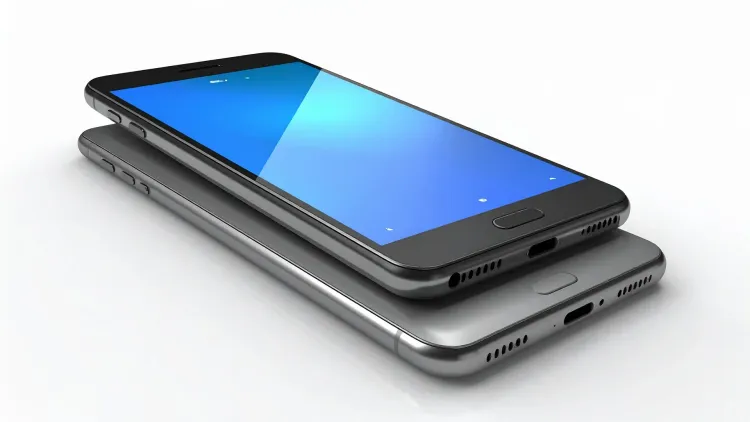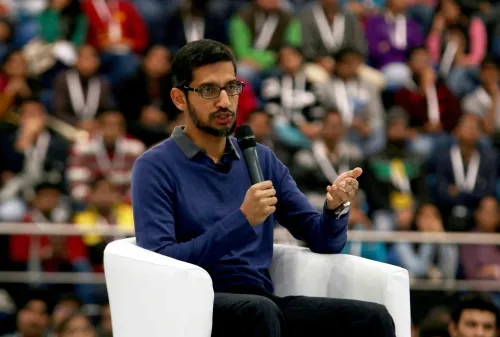How Did India Become the Global Leader in Smartphone Manufacturing?

Synopsis
Key Takeaways
- India has become the top smartphone supplier to the US, surpassing China.
- Significant growth in smartphone production has been driven by government initiatives.
- Indian shipments to the US now account for 44% of total smartphone imports.
- Apple has increased its manufacturing capacity in India.
- India's mobile manufacturing units have surged from 2 to 300 since 2014.
New Delhi, Aug 13 (NationPress) India has overtaken China to establish itself as the top supplier of smartphones to the United States, fueled by the government's 'Make in India' initiative, Apple’s transfer of its manufacturing operations to India, and US importers preemptively stocking their inventory due to tariff uncertainties.
Experts indicate that the increase in tariffs imposed by the US on India has prompted vendors to stock up on inventory, purchasing significantly more than usual and altering their sourcing strategies. Additionally, the government's backing since 2017 through the Make In India program, along with strategic integration into global value chains (GVCs) facilitated by the Production-Linked Incentive (PLI) scheme, has been pivotal to India's achievements.
The overall volume of smartphones manufactured in India surged by 240 percent year-over-year. Apple has expanded its production capabilities in India over recent years, dedicating a substantial portion of its export capacity to cater to the US market as of 2025.
India’s shipments to the US now comprise about 44 percent of all smartphone imports, a significant rise from 13 percent last year. In contrast, China’s share of smartphone exports to the US has decreased to 25 percent, down from 61 percent in the second quarter of 2024.
Currently, India ranks as the world's third-largest exporter of mobile phones, achieving $20.5 billion in exports during CY2024. Together with China and Vietnam, India has emerged as a key player in global electronics manufacturing, with companies shifting their production to diversify supply chains.
During negotiations for a trade deal, Trump implemented a 50 percent tariff on imports from India and a 30 percent tariff on China, alongside a 20 percent tariff on Vietnam. The decline in US smartphone shipments from China has largely been compensated by India, largely due to Apple’s 'China Plus One' strategy.
India now hosts 300 mobile manufacturing units, a remarkable increase from just two in 2014. In FY14, only 26 percent of mobile phones sold in India were manufactured locally, a figure that has now skyrocketed to 99.2 percent, according to government statistics.
Although Apple has begun manufacturing and assembling iPhone 16 Pro models in India, the tech giant still relies on established manufacturing facilities in China for larger-scale supply of these models.
Samsung and Motorola have also increased their contributions of US-targeted supplies from India, but their transitions are significantly slower and smaller compared to Apple’s.









